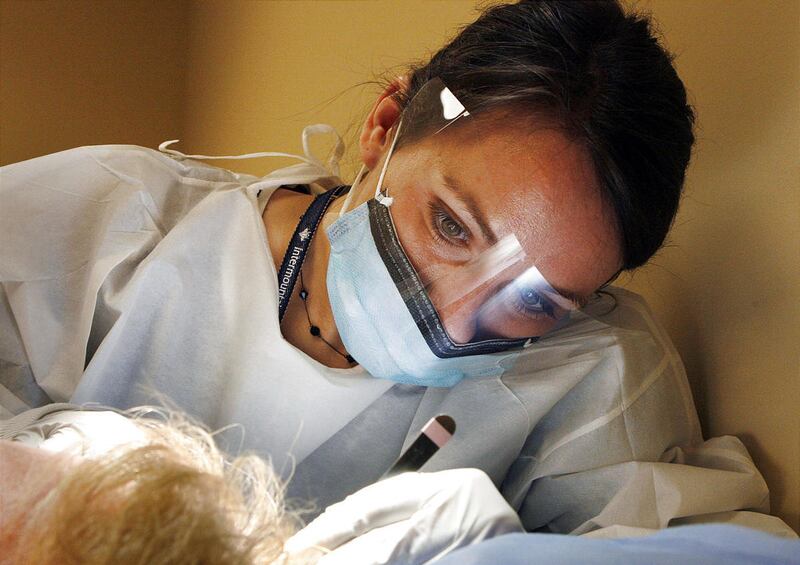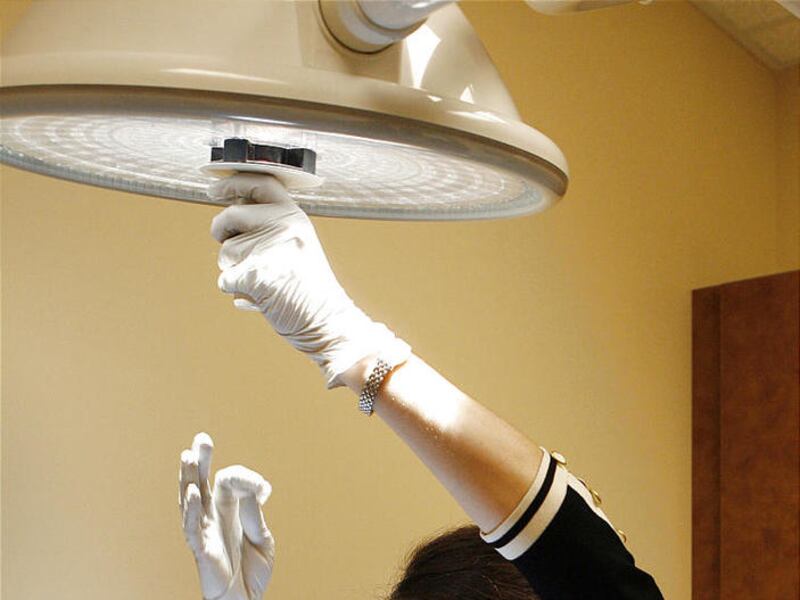"If you're tanned, you're toast" is the legend above the photo of the attractive teen couple whose legs have disappeared into an oversized two-slice appliance. It's an eye-catching ad campaign by the Centers for Disease Control and Prevention that is not joking. Skin cancer is the most common form of cancer in the United States. And for some, it's lethal.
It's also a growing problem for a surprisingly young population, courtesy of a love of tanning booths and sun-drenched activities, say the doctors who treat skin cancer.
Skin cancer, from prevention to treatment, is the topic of Saturday's Deseret News/Intermountain Health Hotline. From 10 a.m. to noon, Dr. Jason Hancey, a plastic surgeon at both Riverton and Alta View hospitals, and Dr. Jana Parker, a dermatologist at Riverton, will take calls. The toll-free number is 1-800-925-8177. You can also pose questions on the Deseret News Facebook page, https://www.facebook.com/desnews.
There are several types of skin cancer, all with the potential to disfigure someone. Melanoma, the least common of the three, can be deadly if it's not detected and treated early. Basal cell is the most common and occurs most often in sun-exposed areas. It's usually removed with surgery and not wildly aggressive, Parker said.
Squamous cell is more aggressive, but not usually life threatening. Like basal skin cancer, it's usually sun-related and treated with surgery.
Sun increases the risk of melanoma, but some cases are genetic. CDC says that in 2007, the last year for which numbers are available, 58,094 people in the United States were diagnosed with melanomas of the skin, and 8,461 people died from it. The total number of skin cancers exceeds all other forms of cancer combined.
Tanning beds increase the risk of all three types of cancer, Parker said.
Squamous and basal cancers often appear on the face, arm, hands or scalp, sometimes as a little red and flaky patch. If you flake it off, it grows right back, which is what makes people think to have it checked. The cancer may show up as a sore that doesn't heal. Initially, it may look like an acne bump or pimple. But it doesn't go away and, instead, continues to grow.
Moles get special attention when it comes to skin cancer and doctors use the alphabet's first five letters to remind people what to look for: Asymmetry, Borders, Color, Diameter and Evolution. Those are all bad. You want a mole to be symmetrical with even borders, a single color, small and unchanging. For people with a number of moles, Hancey said to watch out for "an ugly duckling" in the group.
Most of the time, skin cancer is easy to recognize and remove, Parker said, but it depends on where it's located. On the trunk, arms or legs, it's most often "pretty straightforward. A 30-minute appointment, cut out a football shape and it's sewn up in a line," said Parker. It's more challenging on the ears, mouth or around the eye, where it's harder to remove completely. One face-saving technique is to use "Mohs" surgery, named after the doctor who came up with it. In Mohs, a surgeon takes the cancer out in high risk areas like the face in layers, pausing to see if he or she removed it all and then going back for more if needed and repeating the pathology work to check for clear margins. That way, as little tissue as possible is removed.
Mohs only works on basal and squamous skin cancer. It takes too long to get the pathology checked in melanoma cases.
People with a history of skin cancer should be checked more often because the risk is greater, but everyone over 40 should have an annual full-body skin check, Parker said. Skins cancers that are detected in the earliest stages are curable — even melanoma. And the more fair-skinned one is, the greater the risk of skin cancer. People who had blistering sun burns as kids face additional risk.
While surgery is common to remove skin cancer, it's not the only technique. In some cases where nonmelanoma skin cancer is detected in the earliest stages, creams that cause a rash-like reaction work, as well.
Tomorrow: Melanoma
EMAIL: lois@desnews.com
Health hotline
Skin cancer, from prevention to treatment, is the topic of Saturday's Deseret News/Intermountain Health Hotline. From 10 a.m. to noon, Dr. Jason Hancey, a plastic surgeon who practices at both Riverton and Alta View hospitals, and Dr. Jana Parker, a dermatologist at Riverton, will take calls. The toll-free number is 1-800-925-8177. All calls are confidential. You can also pose questions on the Deseret News Facebook page, www.facebook.com/desnews.Heady goes here
TextHeady goes here
Text



